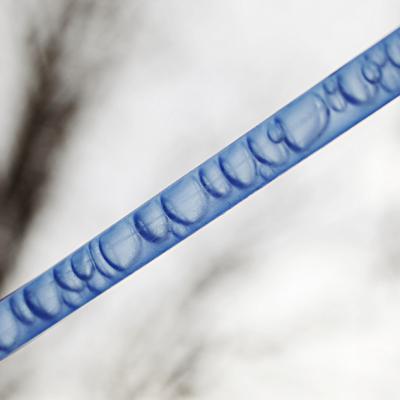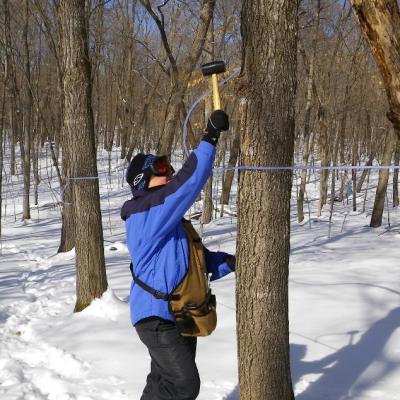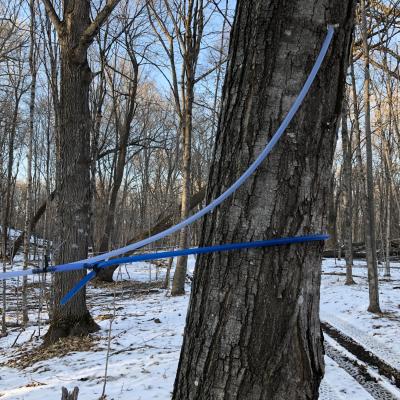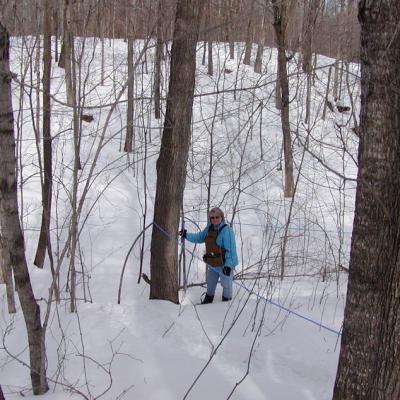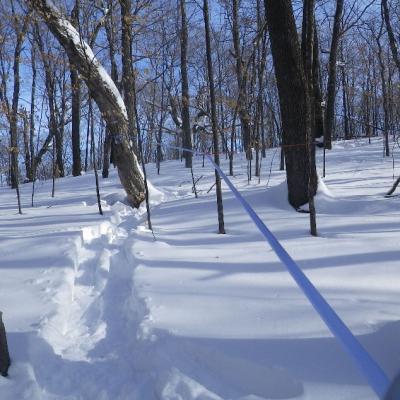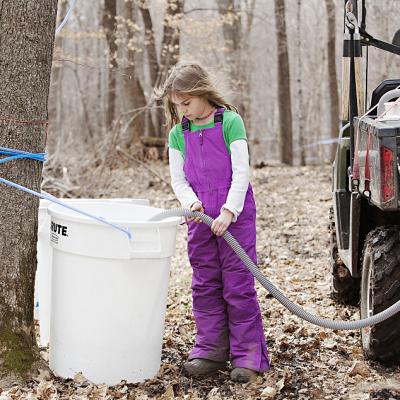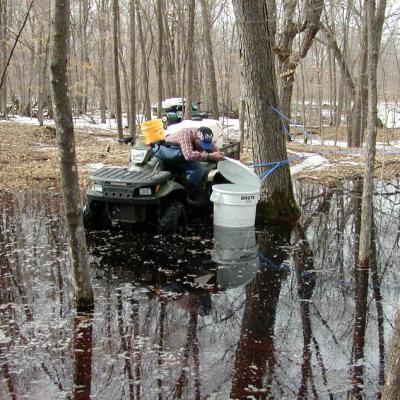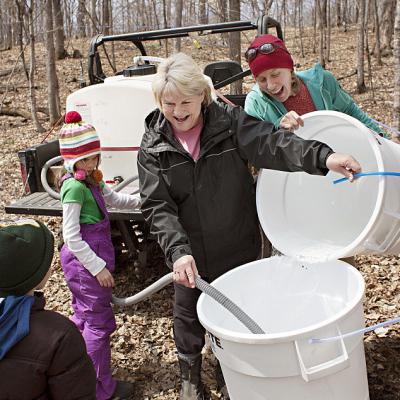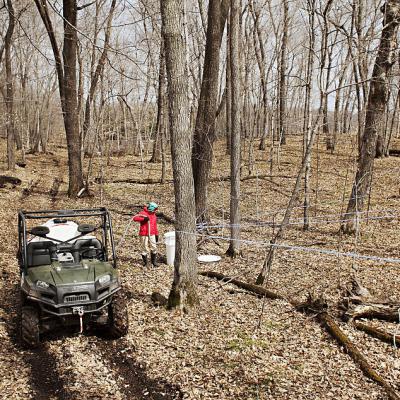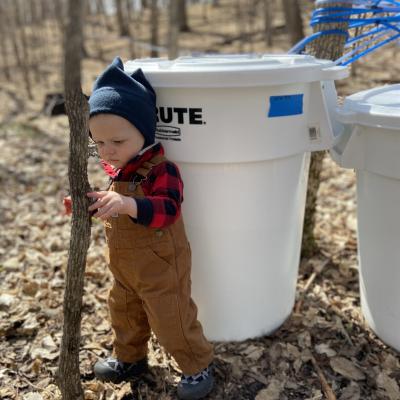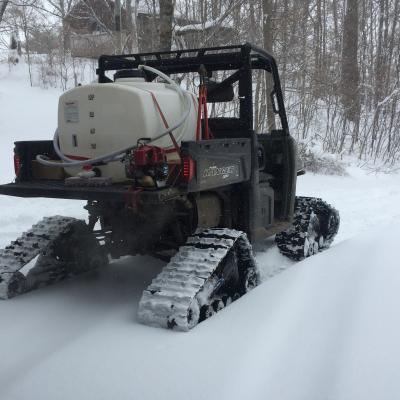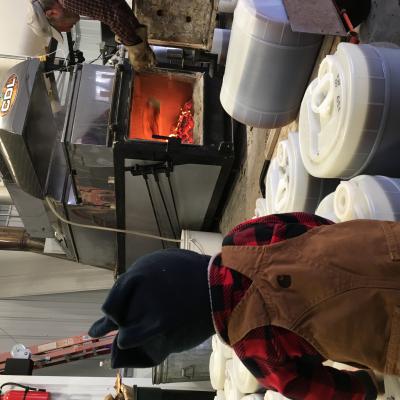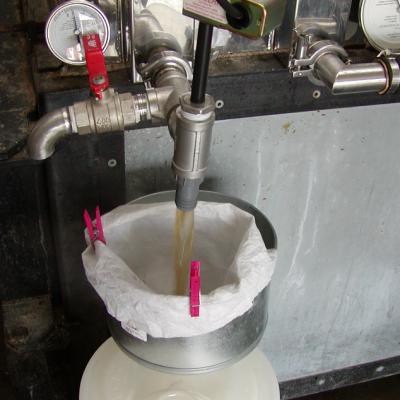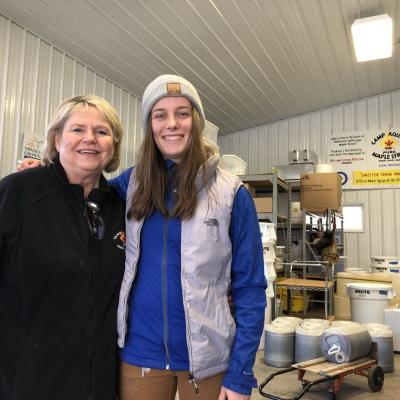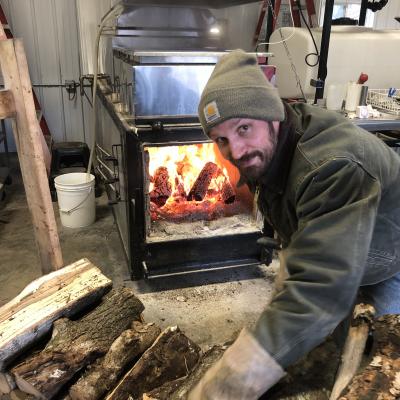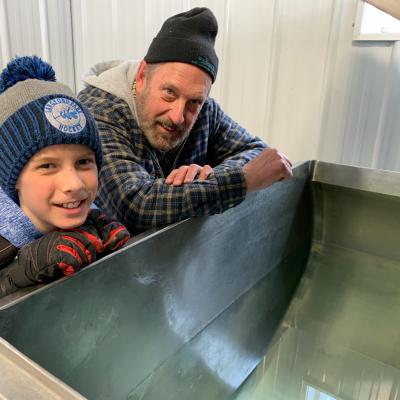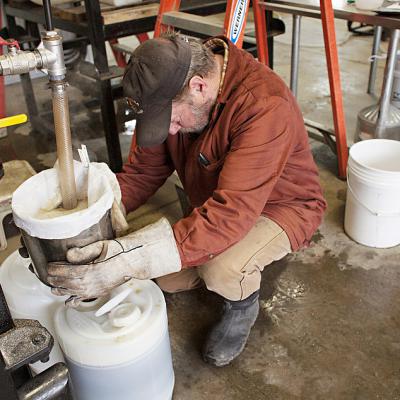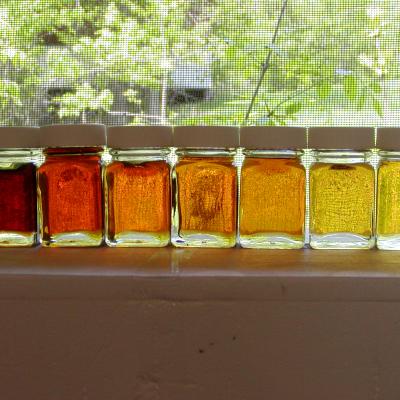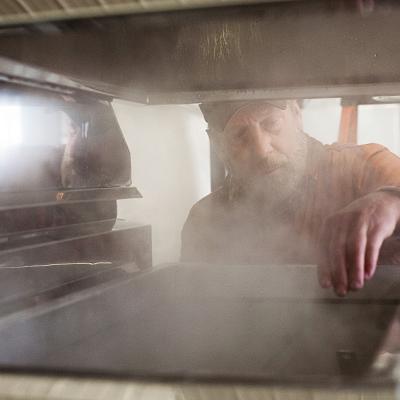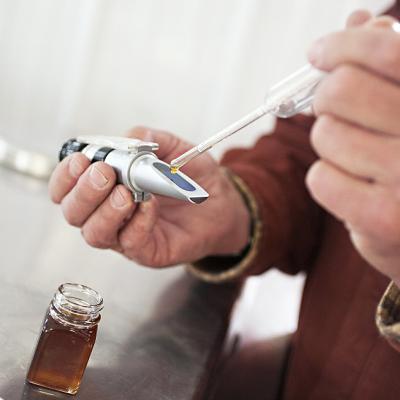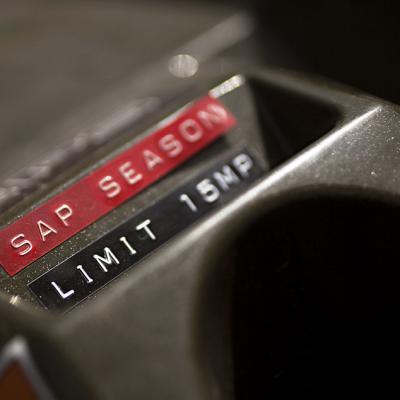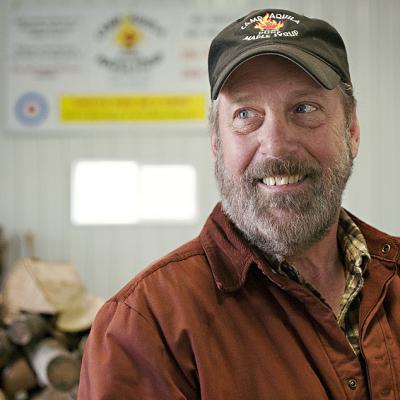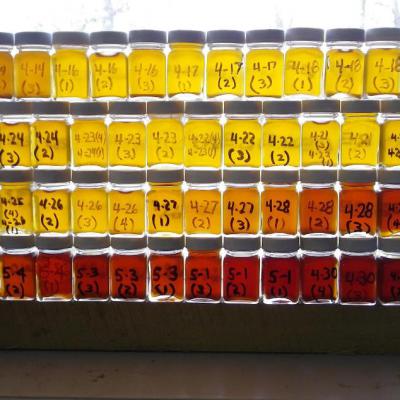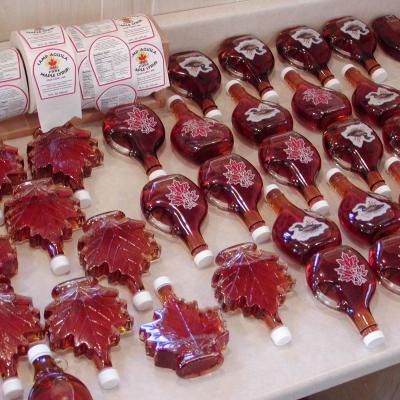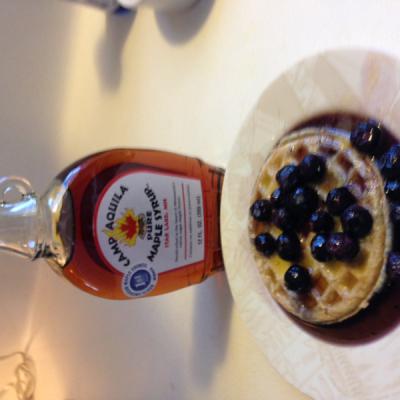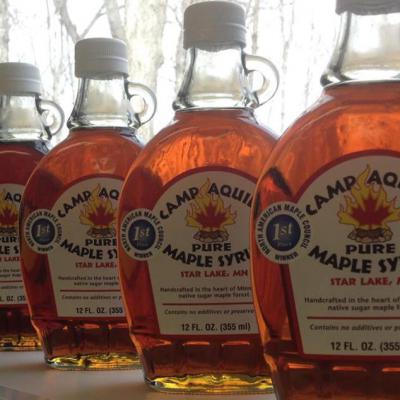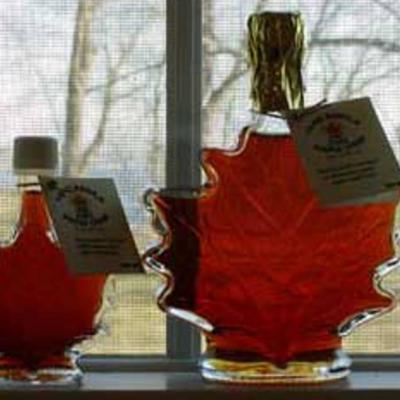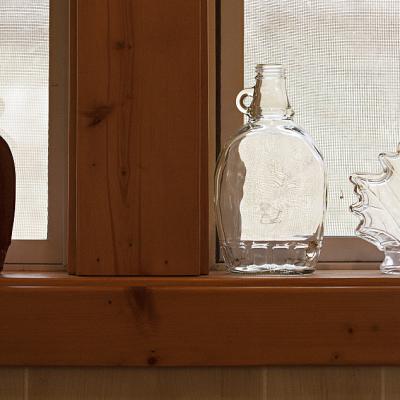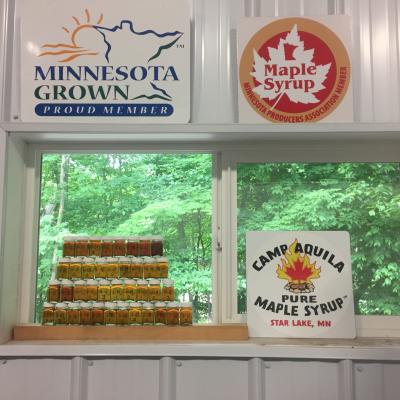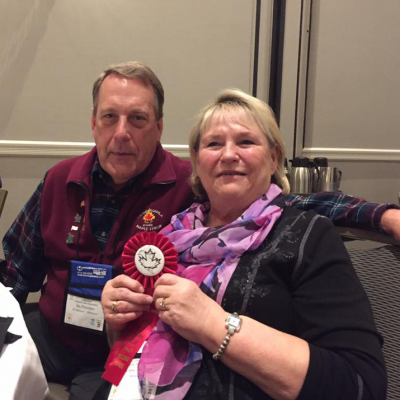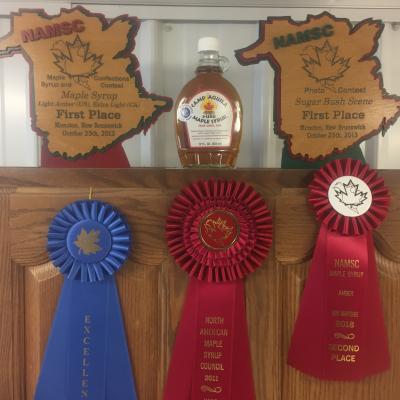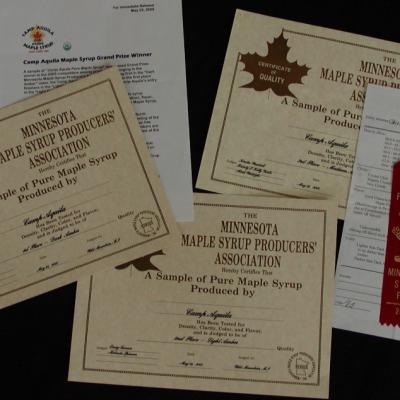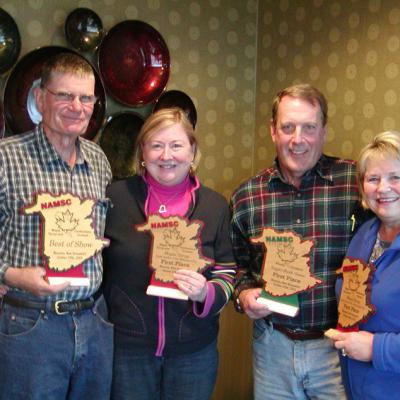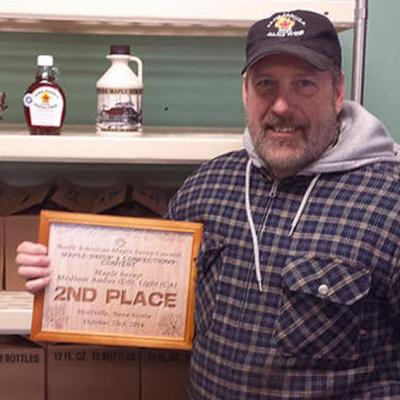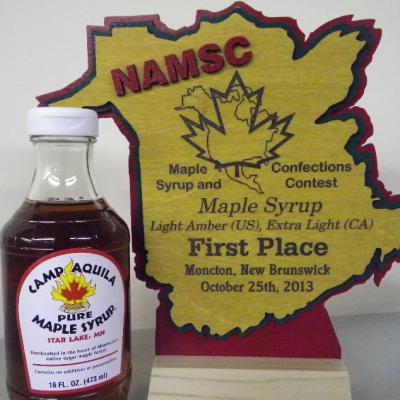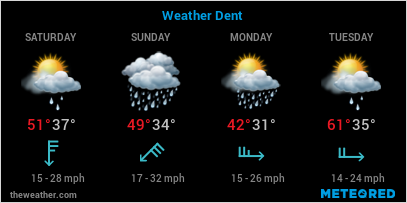How Our Syrup Is Made
Maple syrup production -- that is when the sap begins to run -- typically begins in mid-March and continues through mid-April. Sap usually runs on warm sunny days following cold below-freezing nights. Sap will run for a few days and then taper off waiting for the next freeze-thaw cycle. Eventually the trees respond to the warm sunny days and begin to form buds. When this happens, the chemistry of the sap begins to change and becomes unsuitable for quality syrup production.
Sap Collection
Just before the season is expected to begin, the trees must be "tapped." A small hole is drilled into the maple tree and a spout is tapped into the maple tree. The tap is connected to a tube that runs into a bucket. To make the collection process more efficient, we actually connect several trees to a single line that flows down-hill into a larger collection container. We only tap "sugar maples" which are known for higher sugar content than "soft maple" species and for producing superior maple flavors.
Syrup Production
As the collection containers among the trees are filled, we collect the fresh sap using an ATV equipped with a pump. Sap is then transported to the "sugar house" where it is boiled on a commercial food-grade maple sap evaporator. As the sap boils it becomes increasingly concentrated reducing down from 97% water and 3 percent sugars to 33.5% water and 66.5 percent sugars. It takes about 35 gallons of sap to boil down into a single gallon of pure syrup. From the evaporator, the syrup is reheated to 190 degrees F, filtered to remove all sediment and then "hot packed" and bottled in retail containers ready for market.
Bottles and Labels
Our bottling and labeling process is done according to State and FDA requirements. All products are identified by collection, production and bottling dates. Our goal is to be one of the best "small" producers of flavorful, high quality pure maple syrup.

